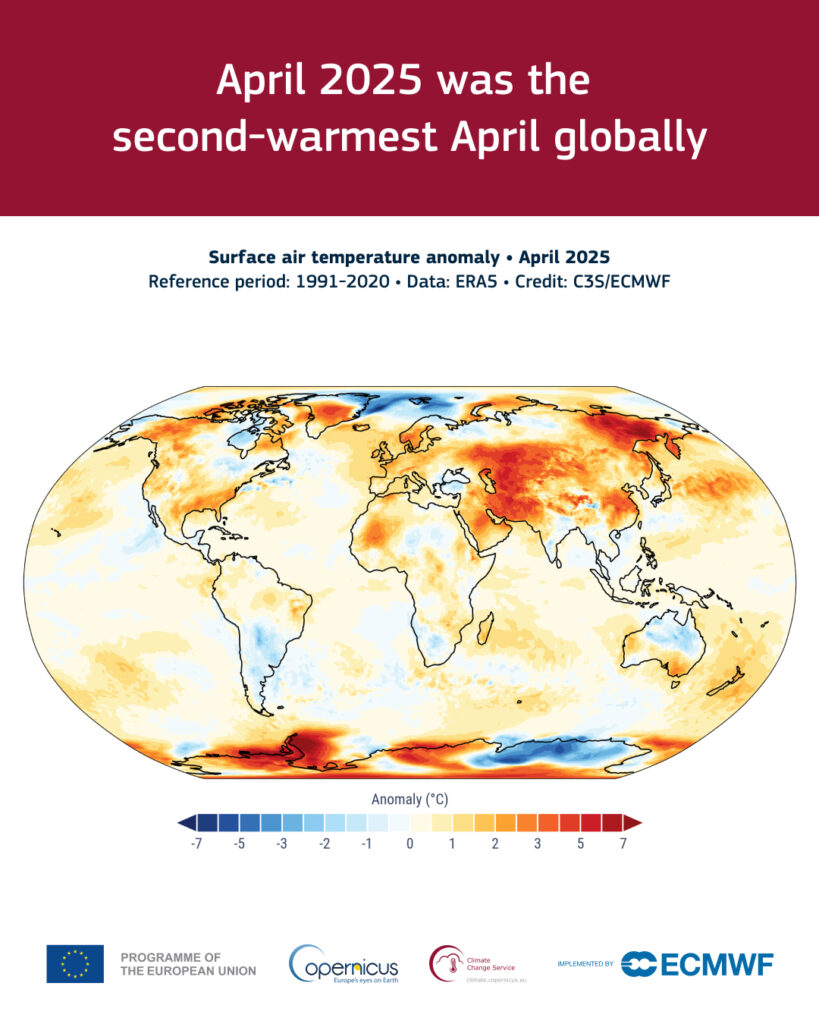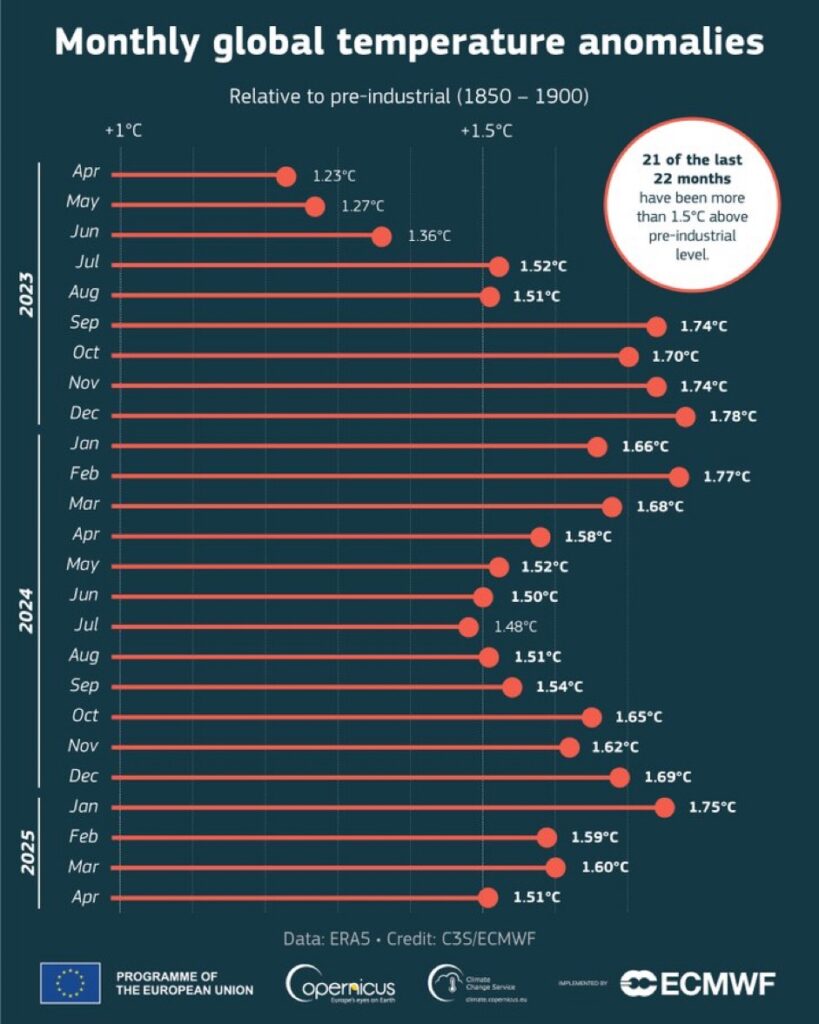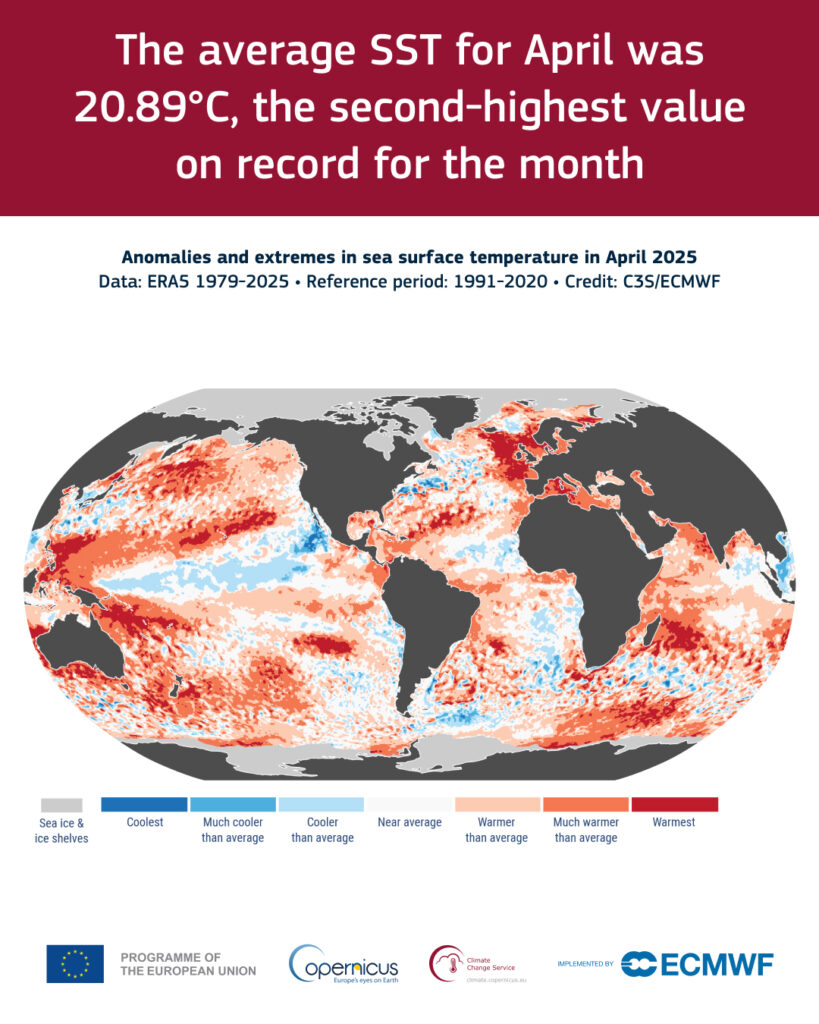April 2025 marked yet another milestone in global climate history as the second warmest April on record. Despite the earlier presence of a weak La Niña in the year, temperatures across the globe have persisted at near-record levels with the first four months of 2025 emerging as the second-warmest on record, closely trailing behind 2024.
Berkeley Earth, based on data from the first three months of the year, has predicted a 34% chance of 2025 becoming the warmest year on record, with a 46% chance of it being the second warmest. Other climate monitoring organizations, including the NOAA’s National Centers for Environmental Information, have presented more cautious forecasts, assigning only a 4% likelihood for 2025 to be the hottest year on record. While Zeke Hausfather, climate researcher and writer calculates an 8% chance of 2025 beating 2024 as the warmest year and a 25% chance of coming in at the third warmest after 2023:
The Copernicus Climate Change Service (C3S) reported that the global average surface air temperature for April 2025 reached 14.96°C. This anomaly, recorded at +0.60°C above the 1991–2020 average and +1.51°C above the pre-industrial baseline (1850–1900), places April 2025 as the second warmest April on record. While it was 0.07°C cooler than the record-breaking April of 2024, April 2025 was still 0.07°C warmer than April 2016, now ranked as the third warmest April.
Temperature anomalies across various climate monitoring organizations highlight the global scope of warming. Comparatively, older baseline measurements, such as those from NOAA, NASA, and the UK Met Office, estimated anomalies between +0.8°C and +1.1°C.

Remarkably 21 months of the last 22 saw global temperatures surpass 1.5°C above pre-industrial levels. From May 2024 to April 2025, temperatures averaged 0.70°C above the 1991–2020 baseline and 1.58°C higher than pre-industrial levels.

Global sea surface temperatures (SSTs) for April 2025, measured between 60°S and 60°N, reached 20.89°C, the second-highest for April, 0.15°C below April 2024’s record.
Record-high SSTs were observed in the northeast North Atlantic, areas near Australia, the Philippine Sea, the eastern Pacific near Hawaii, and the southwestern Indian Ocean east of Madagascar. The Mediterranean Sea was significantly warmer than average, though less extreme than in March.
